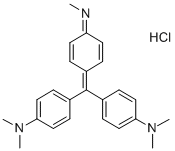2-Methoxy-3-methylpyrazine
- CAS NO.:2847-30-5
- Empirical Formula: C6H8N2O
- Molecular Weight: 124.14
- MDL number: MFCD00006127
- EINECS: 220-651-6
- SAFETY DATA SHEET (SDS)
- Update Date: 2024-12-18 14:08:52

What is 2-Methoxy-3-methylpyrazine?
Chemical properties
clear colourless liquid
Chemical properties
2 or 5 or 6-Methoxy-3-methylpyrazine has an aroma reminiscent of hazelnut, almond and peanut. The methyl methoxy pyrazines are used as nut-like flavoring agents for foods and beverages. The 2-methoxy-3-methyl derivative is used as a coffee aroma enhancing agent.
Occurrence
Reported found in sherry and krill.
Preparation
From 2-methylpyrazine by various routes.
Definition
ChEBI: 2-Methoxy-3-methylpyrazine is a member of pyrazines and an aromatic ether.
Aroma threshold values
Detection: 3 to 7 ppb
General Description
Lowest observable adverse effect levels of 2-methoxy-3-methylpyrazine which inhibits ciliary beat frequency, oocyte pickup rate and infundibular smooth muscle contraction in the hamster oviduct has been evaluated.
Properties of 2-Methoxy-3-methylpyrazine
| Boiling point: | 48-52°C 10mm |
| Density | 1.06 g/mL at 25 °C (lit.) |
| refractive index | n |
| FEMA | 3183 | 2,5 OR 6-METHOXY-3-METHYLPYRAZINE (MIXTURE OF ISOMERS) |
| Flash point: | 132 °F |
| storage temp. | Sealed in dry,Room Temperature |
| form | clear liquid |
| pka | 1.01±0.10(Predicted) |
| color | Colorless to Light yellow |
| Odor | at 0.10 % in dipropylene glycol. nutty roasted hazelnut barly |
| JECFA Number | 788 |
| BRN | 878809 |
| CAS DataBase Reference | 2847-30-5(CAS DataBase Reference) |
| NIST Chemistry Reference | 2-Methoxy-3-methyl pyrazine(2847-30-5) |
| EPA Substance Registry System | Pyrazine, 2-methoxy-3-methyl- (2847-30-5) |
Safety information for 2-Methoxy-3-methylpyrazine
| Signal word | Danger |
| Pictogram(s) |
 Flame Flammables GHS02  Corrosion Corrosives GHS05  Exclamation Mark Irritant GHS07 |
| GHS Hazard Statements |
H226:Flammable liquids H302:Acute toxicity,oral H315:Skin corrosion/irritation H318:Serious eye damage/eye irritation H335:Specific target organ toxicity, single exposure;Respiratory tract irritation |
| Precautionary Statement Codes |
P210:Keep away from heat/sparks/open flames/hot surfaces. — No smoking. P233:Keep container tightly closed. P280:Wear protective gloves/protective clothing/eye protection/face protection. P301+P312:IF SWALLOWED: call a POISON CENTER or doctor/physician IF you feel unwell. P303+P361+P353:IF ON SKIN (or hair): Remove/Take off Immediately all contaminated clothing. Rinse SKIN with water/shower. P305+P351+P338:IF IN EYES: Rinse cautiously with water for several minutes. Remove contact lenses, if present and easy to do. Continuerinsing. |
Computed Descriptors for 2-Methoxy-3-methylpyrazine
New Products
4-Fluorophenylacetic acid 4-Methylphenylacetic acid N-Boc-D-alaninol N-BOC-D/L-ALANINOL Tert-butyl bis(2-chloroethyl)carbamate 3-Morpholino-1-(4-nitrophenyl)-5,6-dihydropyridin- 2(1H)-one Furan-2,5-Dicarboxylic Acid Tropic acid S-2-CHLORO PROPIONIC ACID ETHYL ISOCYANOACETATE 2-Bromo-1,3-Bis(Dimethylamino)Trimethinium Hexafluorophosphate (6-METHYL-[1,3]DITHIOLO[4,5-b]QUINOXALIN-2-ONE INDAZOLE-3-CARBOXYLIC ACID 4-IODO BENZOIC ACID (2-Hydroxyphenyl)acetonitrile 4-Bromopyrazole 5,6-Dimethoxyindanone 2-(Cyanocyclohexyl)acetic acid 4-methoxy-3,5-dinitropyridine 2-aminopropyl benzoate hydrochloride 1-(4-(aminomethyl)benzyl)urea hydrochloride diethyl 2-(2-((tertbutoxycarbonyl)amino) ethyl)malonate tert-butyl 4- (ureidomethyl)benzylcarbamate Ethyl-2-chloro((4-methoxyphenyl)hydrazono)acetateRelated products of tetrahydrofuran








You may like
-
 2-Methoxy-3-methylpyrazine CAS 2847-30-5View Details
2-Methoxy-3-methylpyrazine CAS 2847-30-5View Details
2847-30-5 -
 2-Methoxy-3-methylpyrazine CAS 2847-30-5View Details
2-Methoxy-3-methylpyrazine CAS 2847-30-5View Details
2847-30-5 -
 1975-50-4 98%View Details
1975-50-4 98%View Details
1975-50-4 -
 2-HYDROXY BENZYL ALCOHOL 98%View Details
2-HYDROXY BENZYL ALCOHOL 98%View Details
90-01-7 -
 2-Chloro-1,3-Bis(Dimethylamino)Trimethinium Hexafluorophosphate 221615-75-4 98%View Details
2-Chloro-1,3-Bis(Dimethylamino)Trimethinium Hexafluorophosphate 221615-75-4 98%View Details
221615-75-4 -
 61397-56-6 CIS BROMO BENZOATE 98%View Details
61397-56-6 CIS BROMO BENZOATE 98%View Details
61397-56-6 -
 14714-50-2 (2-Hydroxyphenyl)acetonitrile 98+View Details
14714-50-2 (2-Hydroxyphenyl)acetonitrile 98+View Details
14714-50-2 -
 118753-70-1 98+View Details
118753-70-1 98+View Details
118753-70-1
Statement: All products displayed on this website are only used for non medical purposes such as industrial applications or scientific research, and cannot be used for clinical diagnosis or treatment of humans or animals. They are not medicinal or edible.